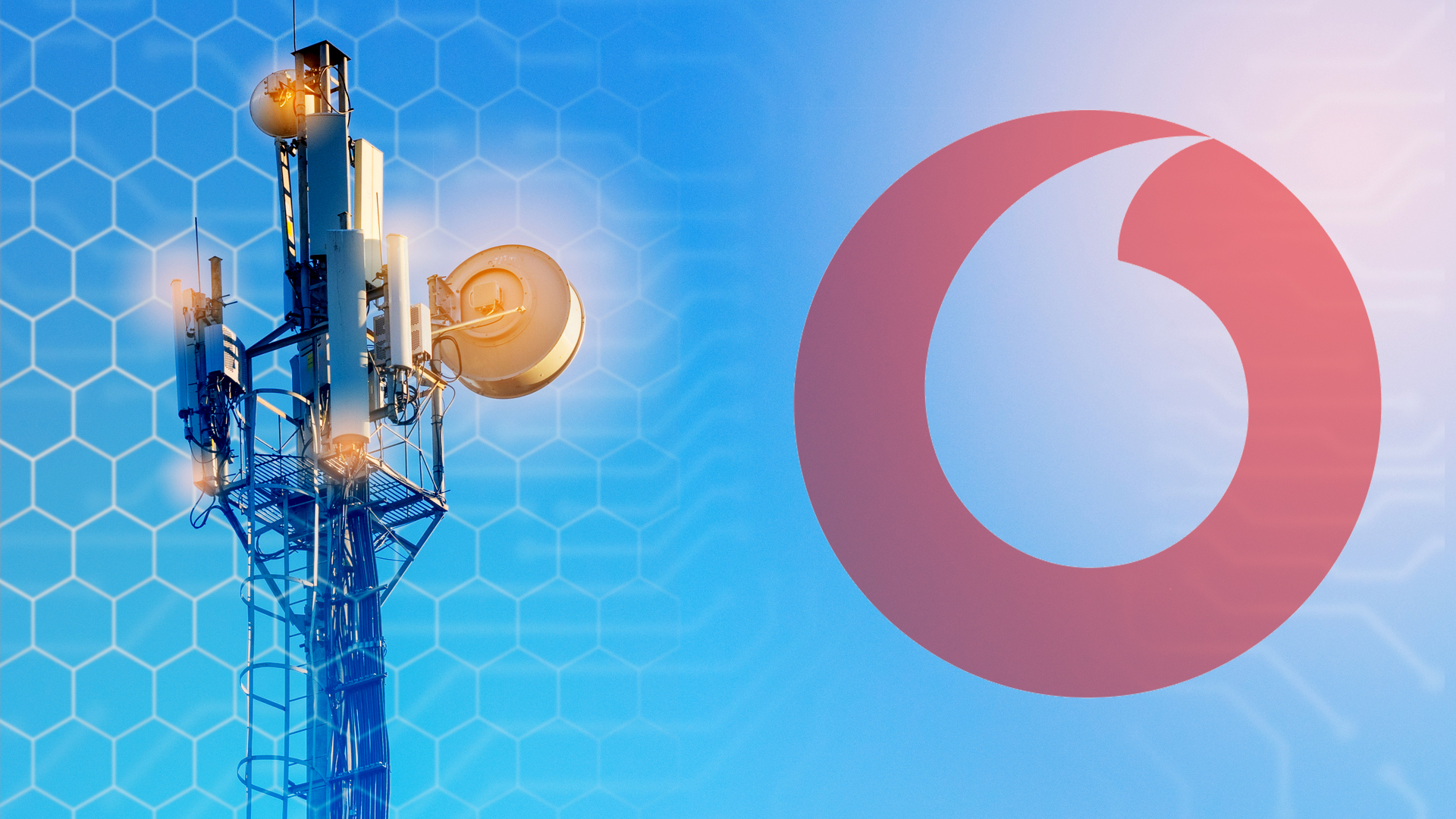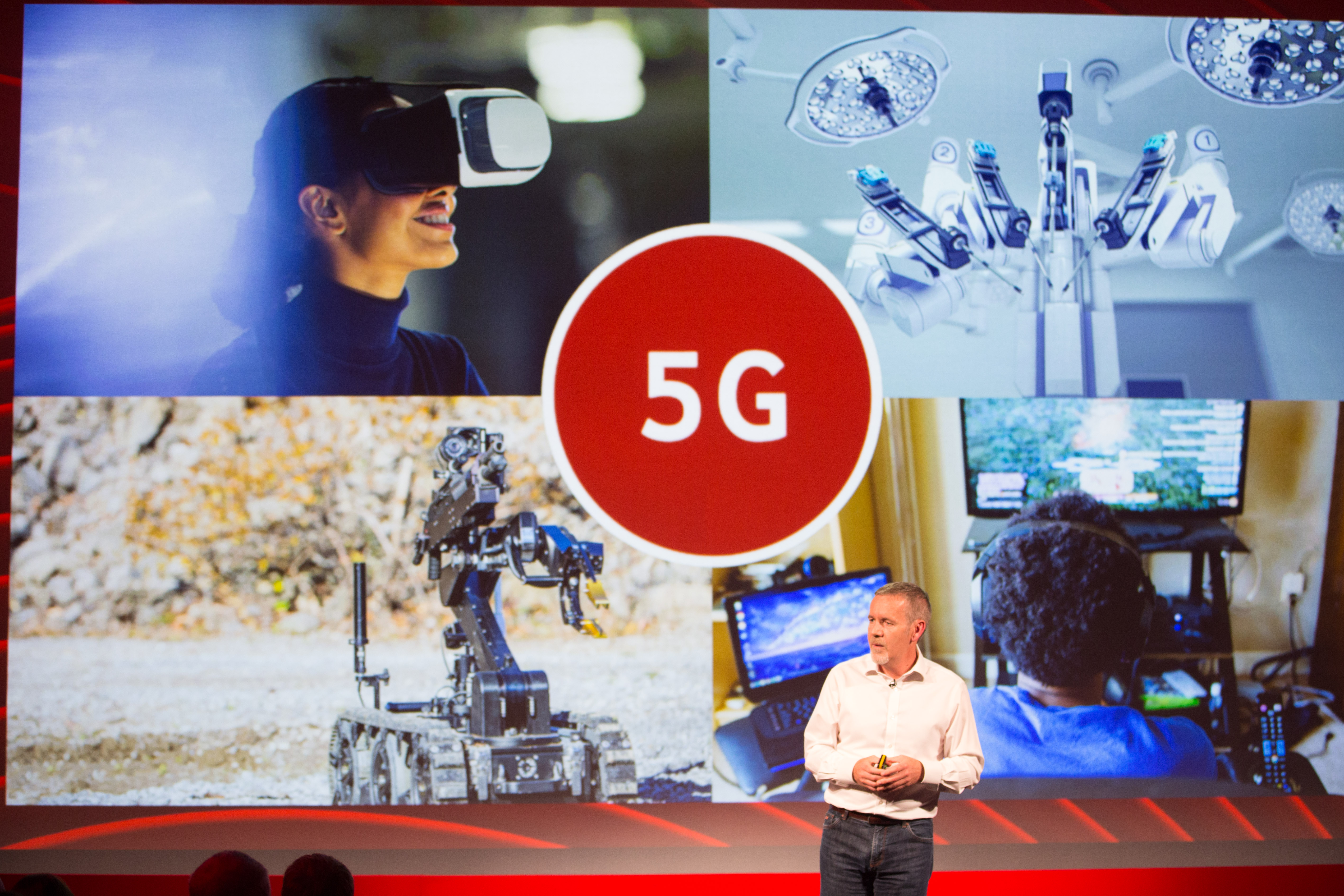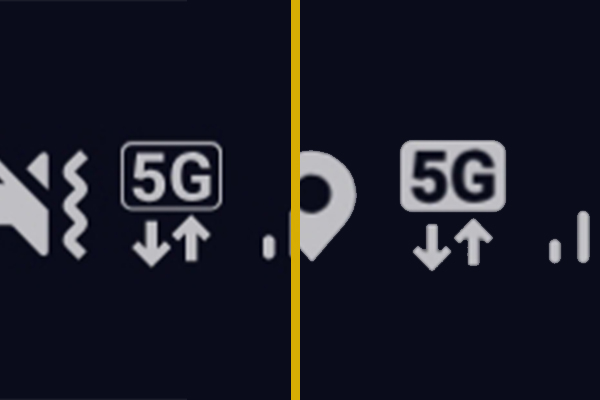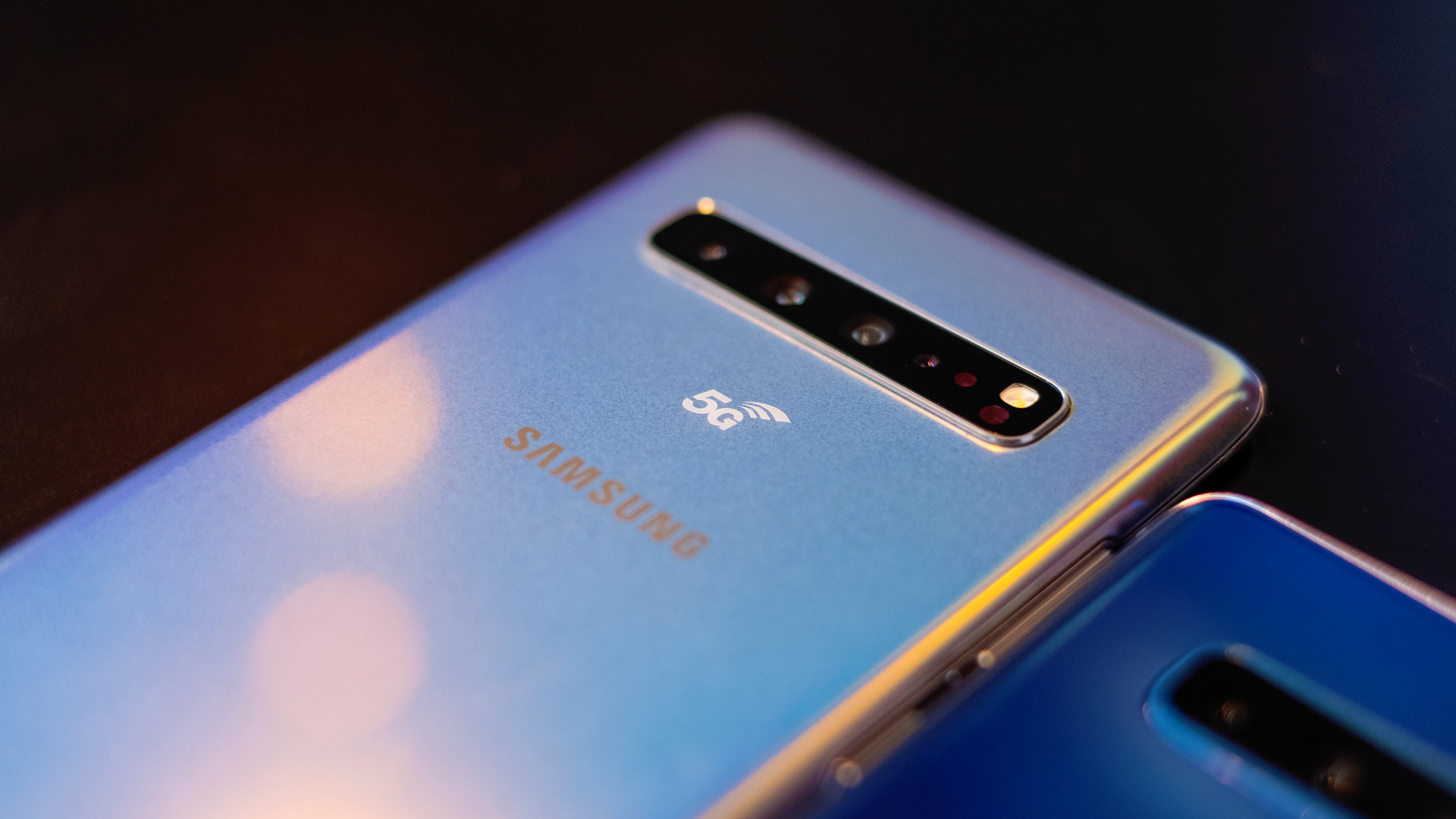Vodafone 5G network review: Patchy coverage douses potential
We look at Vodafone’s 5G network and whether it’s fit for business


5G: It's arguably the most talked about technology of 2019, and the race to get our hands on it in the office has almost been as intense as the British telcos racing each other to bring 5G to market. However, the real test is in the network's performance - EE may have pipped Vodafone to the post by a little more than a month, but the question is: has that extra time given Vodafone an opportunity to build a better network?
It's difficult to say just yet, but it certainly got off to a promising start. Starting at just 19.16 for business customers, Vodafone's base level price for a business 5G plan is on par with EE's but offers much more for the price, such as unlimited data compared to EE's paltry 5GB. Going for unlimited data is a bold strategy from Vodafone and is one that's sure to make its plans more competitive than a family game of Monopoly at Christmas.
But to be a hit with its customers, these prices also had to be backed by good speeds and network coverage - the kind truly worthy of a 5G crown - and that's what we've been testing recently.
EE and Vodafone are the only two 5G providers in the UK right now and the two services are being marketed in very different ways. EE's business plans are banking on its reputation as the most popular and prevalent network in the country, married with its business-grade mobile security from MobileIron and swappable benefits such as BT Sport packages. Vodafone, on the other hand, took the unlimited data route, with much cheaper pricing to entice customers away from EE's limited data allowances.
As the name suggests, 5G technology is the fifth generation of mobile cellular connectivity, leading on from 4G which launched in the UK back in 2013. A key aim of the technology is to provide the connectivity to drive 'Industry 4.0' into reality.
That means providing the network infrastructure for connected cars, smart cities and IoT deployments on a gargantuan scale - to name but a few. According to its providers, it also promises to solve the rural connectivity issue with smaller and more mobile masts.
Vodafone 5G network review: Testing Methodology
To get a comprehensive overview of how Vodafone's 5G network fares (as well as a general expectation of what a 5G network should be providing), we devised some procedures to ensure accuracy, consistency and real-world business relevance.
Get the ITPro daily newsletter
Sign up today and you will receive a free copy of our Future Focus 2025 report - the leading guidance on AI, cybersecurity and other IT challenges as per 700+ senior executives
To determine testing spots, we used a few cheat sheets from Vodafone to inform us of the prime locations where we could get a taste of the sweetest speeds. A few recommendations from industry experts also helped get us started, as did Vodafone's online coverage checker - an interactive heatmap displaying the locations with the strongest signal. We went everywhere that promised good results.
To measure speeds, we used Ookla's popular Speedtest app and to get a real flavour of how 5G would serve a business' day-to-day needs, we tested real-world download speeds for accessing cloud storage.
Vodafone 5G network review: Speed
After months of waiting for 5G-enabled devices to arrive, the result was fairly anti-climactic. Even when standing directly under masts in Vodafone's recommended London locations, speeds were nowhere near the standard that the technology has been producing in other corners of the world. After a sweaty trek across London, armed with high hopes for gigabit speeds, the real kick in the teeth came from the consistent 30-40Mb/sec download speeds on Grays Inn Road, near Chancery Lane - a dire reward for our efforts.
The 1Gb/sec dream promised by the 5G hype was just that: a dream. From location to location, the speeds would usually average out between 100Mb/sec and 150Mb/sec; we'd see the odd score over 200Mb/sec but that was more of a rarity. The peak speed we saw was 424Mb/sec, recorded in Birmingham City Centre - another of Vodafone's seven launch cities. It was also the only score we got that ventured into the realm of ultrafast broadband (defined as 300Mb/sec or above) which indicates that 5G is hardly the groundbreaking, hyped-up technology we've been promised - at least, not right now.

The discrepancy in speeds between tests was remarkable, considering they were carried out in immediate succession. There was little fluctuation in ping but in some cases, we saw differences in speeds that were just downright weird. For example, in a central Birmingham hotel room, we saw download speeds vary between 424Mb/sec and 117Mb/sec. This variation means that your business might not be able to run critical functions which rely on a consistent connection with the same reliability of fixed-line access.
If you rely on video conferencing to attend meetings, briefings and other engagements, for example, then you could be in for a rougher time due to the unpredictable fluctuation in network performance. If you rely on frequent file transfers then you can also expect a more inconsistent service, as can businesses that process digital payments.
It's worth noting that most enterprise networking hardware will include quality of service (QoS) tools which can be configured to prioritise network bandwidth for specific functions such as processing payments, to ensure consistent operation. This may compensate for some of the instability, but it's still worth bearing in mind.
Vodafone 5G network review: Real-world performance
Businesses across the country are currently deciding whether to invest in a 5G product for their office and to do that, they should know what downloading files is actually like.
To replicate everyday office downloads, we measured how long it took to download three folders, all of similar sizes, but consisting of varying numbers of files: one with a large, multi-gigabyte file, another with 23 medium-sized files and a final folder with around 100 smaller files. This tested the network's efficiency in high-volume batch downloads, as well as large individual files.
When it comes to actually downloading files, we saw consistencies in some areas but also some wild irregularities when comparing the speeds recorded in different locations. Taking our large file size downloads as an example, we saw the download complete in as little as 25 seconds, all the way up to just under six minutes. Two locations took longer than five minutes, another two took longer than two minutes while Soho Square's connection munched through the task in seconds, despite scoring no better than any other spot in terms of speed.
In addition, the blistering speed in Soho Square didn't translate to success in other tests. We may have seen 25 seconds for our large file, but our small file completed in 56 seconds, the same speed as Howick Place, which took more than two minutes to download the large file. In practice, the real-world download speed is as unpredictable as actually finding a serviced location in the first place.
One important thing to be aware of is the current confusion around what the 5G status indicator actually indicates. There are two different 5G indicators displayed by Samsung's Galaxy S10 5G (pictured below). One is represented by solid lettering on a hollow background while the other is indicated by hollowed text on a solid background.
What this means is anyone's guess, according to the GSMA's Future Networks Programme 5G Status Indicator (5GSI) Task Force which tells carriers to display 5G at nearly all times. According to this advice, 5G will appear when connected to a tower that supports 5G, but may only be running on an LTE network. The only instance where a 4G indicator will be shown is when the tower doesn't support a 5G connection at all. Although this is the 5GSI's advice, carriers are free to display the symbols in whichever way they choose.

IT Pro approached Vodafone to clarify the meaning behind the two different status indicators we saw. The carrier simply explained that the "hollow" symbol (pictured left) means 5G is present but the device is idling and therefore isn't using it. The "solid" symbol (right) indicates that 5G is being used.
While there are a number of obvious drawbacks to the network in its current state, our testing showed that it still beats Vodafone's average 4G network performance in London. Figures from RootMetrics' latest London report (2018) revealed that Vodafone posted the highest average 4G speeds across the four major carriers with 38.2 Mb/sec.
So although Vodafone's 5G speeds didn't blow us away, with an overall average sitting somewhere in the low 100Mb/sec region, it's certainly a huge step up from what its customers might be experiencing right now in the capital. It's already a massive improvement and it's only going to get better, so that's something to consider if you're debating whether to become an early adopter. Moreover, even when not in a 5G hotspot, you'll still be connected to one of the country's leading 4G networks so it's not as if the early adopters will be losing out on any connectivity. Although Vodafone's 4G network is still reliable across most of the country, the 5G coverage right now is sketchy, to put it mildly.
Vodafone 5G network review: Coverage and connectivity
The prevailing takeaway from our experience with Vodafone's 5G service was the sheer patchiness of it; the slightest movement could take you out of a coverage zone and after weeks of testing, it became tedious to say the least.
For example, our testing in Soho Square involved us standing on the edge of a pavement for 15 minutes, while two metres away there was a comfortable outdoor seating area from which we would have loved to conduct the tests - but no dice. Moving the two steps towards the seats resulted in the phone switching its 5G status indicator from solid to hollow and a seemingly weaker connection when comparing speeds carried out with each indicator present.
If you're thinking about investing in a new 5G phone deal, then expect to share our frustration when actually trying to find an area with guaranteed 5G service. Despite cross-referencing Vodafone's online coverage checker with the location recommendations given to us by Vodafone, we still struggled to actually find a reliable 5G signal in the promised areas.

As a side-note, Vodafone's coverage map was largely inaccurate in its suggestions for strong 5G service areas. So, before investing in a 5G plan, you might want to get your hands on a 5G device to double-check your area is, in fact, serviced.
The first day of testing was the biggest struggle. We were advised to go to Victoria Embankment, Charing Cross Road and Holborn station - supposedly the three best locations that were close to our Fitzrovia offices. All prime London business hotspots in their own right, we expected to get some decent testing done in all three. However, after a full afternoon of testing, the only glimmer of 5G we saw was down a nearby tiny side-street behind Charing Cross Station.
The struggles continued when we ventured indoors, too. If you've been keeping up with 5G news recently, you'll probably be aware that due to the spectrum on which 5G operates, it's going to be less effective at penetrating hard surfaces like walls. The two problem areas are the sub-6GHz spectrum it's currently operating on and mmWave when it starts running the really high speeds years down the line.
This proved to be a problem during our testing, especially in Soho Square. Despite being no more than two to three metres inside a small cafe, we soon realised just how much significance the indoor setting had on network performance. Peak speeds on the kerb outside reached 187Mb/sec, but indoors fared much worse at just 55Mb/sec.
Vodafone 5G network review: Verdict
The current reliability of its network makes it difficult to recommend Vodafone - especially if you're looking for the 5G experience the industry has promised straight out of the gate.
However, there are some enticing propositions from Vodafone's offering, especially compared to other networks right now. Vodafone has entered the market in a strong position with its unique unlimited data plans across all pricing tiers. Much like how home broadband deals work, instead of paying Vodafone for data, you're paying for speed and if you're considering a 5G product, then you'd probably rather browse a little slower in favour of unlimited time online.
But if you live in a serviced location and you're working with 4G right now, then consider holding tight on an upgrade. You could argue that, by upgrading, you're not losing out on anything but the issue runs a little deeper than that. First, you'll have to bear the hefty upfront cost of a new 5G-enabled device. Couple that with the fact that only two networks are live at the time of writing and you've got two very solid reasons to stay patient.
As more networks roll out, you may find your needs serviced better on other networks and you'll almost certainly see better deals once the initial hype has been extinguished and the competition gets fiercer. Much like with a lot of new technology, there was always going to be teething problems at the start as everyone tried to be the first to push out a technology that wasn't quite ready to be pushed, but don't let this sour your perception of 5G. It's here, it's announced itself with an explosive bang, and it certainly only goes up from here.

Connor Jones has been at the forefront of global cyber security news coverage for the past few years, breaking developments on major stories such as LockBit’s ransomware attack on Royal Mail International, and many others. He has also made sporadic appearances on the ITPro Podcast discussing topics from home desk setups all the way to hacking systems using prosthetic limbs. He has a master’s degree in Magazine Journalism from the University of Sheffield, and has previously written for the likes of Red Bull Esports and UNILAD tech during his career that started in 2015.
-
 Bigger salaries, more burnout: Is the CISO role in crisis?
Bigger salaries, more burnout: Is the CISO role in crisis?In-depth CISOs are more stressed than ever before – but why is this and what can be done?
By Kate O'Flaherty Published
-
 Cheap cyber crime kits can be bought on the dark web for less than $25
Cheap cyber crime kits can be bought on the dark web for less than $25News Research from NordVPN shows phishing kits are now widely available on the dark web and via messaging apps like Telegram, and are often selling for less than $25.
By Emma Woollacott Published